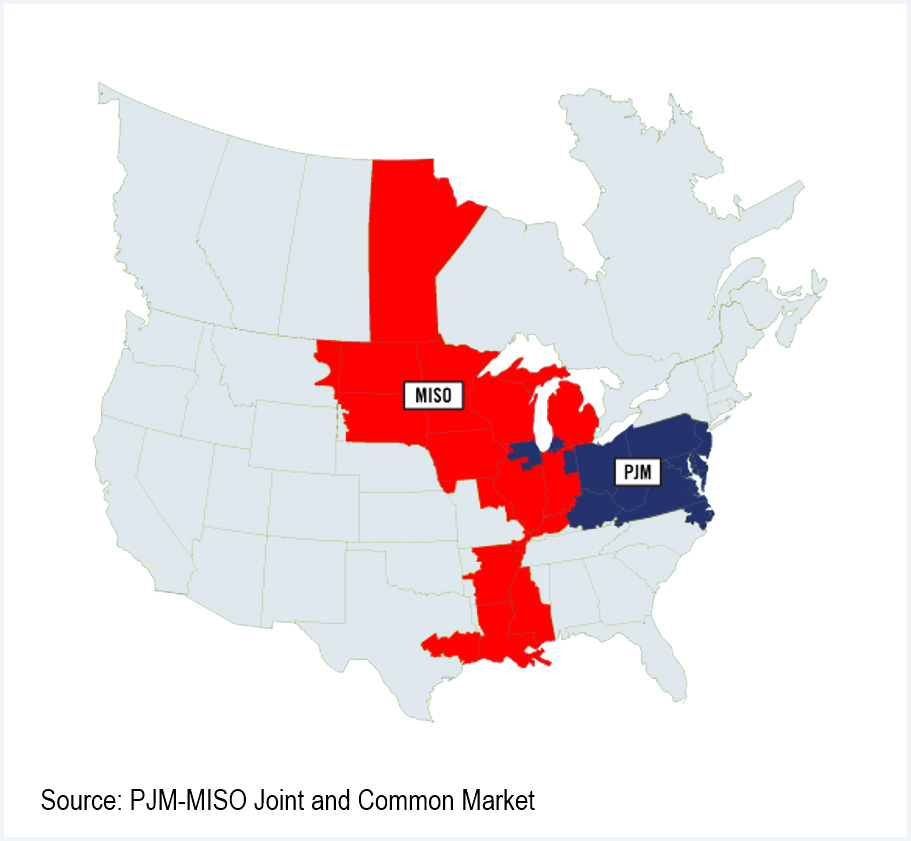By Michael Brooks

Now, the commission is starting the process of arbitrating interregional compliance filings, beginning last week with PJM and MISO.
It’s clear the RTOs still have work to do.
FERC conditionally accepted the RTOs’ proposed revisions to their joint operating agreement (JOA), finding that they only partially complied with the requirements of Order 1000. It directed them to modify their interregional cost allocation method for cross-border transmission projects and develop identical language in their Tariffs to describe their interregional transmission coordination procedures (ER13-1944).
Cross-Border Project Cost Allocation
The RTOs filed their own revisions separately last year, mainly because of disagreements over the cross-border project cost allocation issue. While PJM proposed relying on the existing cost allocation methods in the JOA, MISO wanted to remove them for cross-border baseline reliability projects, arguing that tie lines between MISO and PJM transmission owners be designated as reliability projects, with each RTO recovering costs in accordance with its own Tariff. (See PJM in Standoff with MISO, NYISO on Order 1000 Filing.)
MISO based its argument on the fact that FERC had previously accepted the RTO’s proposal in its regional Order 1000 compliance filing to remove regional cost allocation for its baseline reliability projects and assign all of the costs to the pricing zone where the project is located.
FERC rejected MISO’s argument, however. “To the extent that a conflict exists between the existing cross-border baseline reliability project cost allocation in the MISO-PJM JOA and the cost allocation requirements for interregional transmission facilities in Order 1000, that conflict results from MISO’s decision to no longer regionally allocate the costs of MISO baseline reliability projects, not the requirements of Order 1000,” FERC said.
Similar, but not Identical, Language
In their compliance filings, PJM and MISO said they were in agreement over interregional transmission coordination procedures. But owing to their separate filings, the RTOs included language and terms based on their own individual Tariffs. Order 1000 requires neighboring planners to use the same language in their filings.
“Although MISO and PJM state that these minor differences in their respective filings are needed to reflect whether the
discussion is from the perspective of either MISO or PJM, we find that some of the differences do not serve this purpose and therefore are not necessary,” FERC said. The commission directed the RTOs to adopt identical terms in new compliance filings due in two months.
FERC also said that the RTOs’ cost allocation proposals do not explicitly refer to an interregional transmission facility as defined by Order 1000: “a transmission facility that is located in two or more transmission planning regions.” The RTOs’ JOA refers to cross-border baseline reliability projects and cross-border market efficiency projects, but it does not explicitly state that these projects must be located in both PJM and MISO. FERC wants a definition that matches Order 1000’s in the next filing.
“I guess it’s no secret that the somewhat convoluted seams between those two regions have a complicated and lengthy history at the commission, and I’m hopeful that today’s order on the interregional compliance filing will help improve … [the] interregional coordination of transmission across the seams,” FERC Chairman Cheryl LaFleur said. “It does look so far like … interregional coordination [and] cost allocation … will be the [issues] that we have to devote some attention to.”
NIPSCO Complaint
In a separate but related order, FERC addressed a complaint from Northern Indiana Public Service Co. against PJM and MISO regarding the interregional transmission planning provisions in the JOA. NIPSCO, a MISO member, is flanked by PJM in eastern Indiana and Illinois to its west.
The company complained that the MISO-PJM seams there are highly congested and that the RTOs have not approved a single cross-border transmission upgrade project under their JOA.
In response, FERC ordered staff to conduct a technical conference to explore the issues NIPSCO raised (EL13-88).


